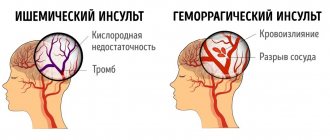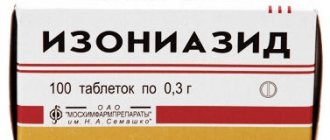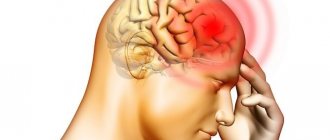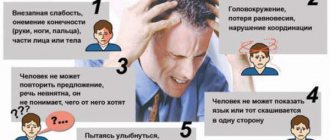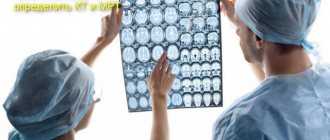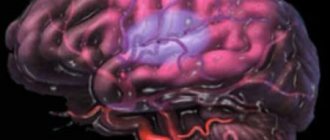Concept, types, consequences
Meningitis is an inflammation of the membranes of the brain and (or) spinal cord that is infectious in nature. In the purulent form of the disease, the cerebrospinal fluid (CSF) is also involved in the inflammatory process, becomes cloudy and changes its composition. The disease has several classifications based on various characteristics:
By type of pathogen:
- bacterial, most often caused by meningococcus (up to 70% of bacterial meningitis). It can also be caused by streptococci, staphylococci, Pseudomonas aeruginosa and tuberculosis bacilli and other pathogens of purulent processes;
- viral. Pathogens are enteroviruses, Coxsackie virus and Epstein-Barr virus, sometimes it can be herpes and mumps virus, cytomegalovirus, adenovirus and some others;
- fungal. It is most often caused by the fungi Cryptococcus neoformans, as well as Candida and Coccidioides immitis;
- parasitic (protozoal), caused by one of the types of amoebas - Naegleria fowleri or toxoplasma. This type of meningitis is quite rare;
- mixed, when several pathogens are present.
According to the nature of inflammation:
- purulent. Most of the cells in the cerebrospinal fluid are neutrophils, whose function is to protect against bacteria and fungi;
- serous, when lymphocytes responsible for fighting viruses predominate in the cerebrospinal fluid.
According to pathogenesis (features of occurrence):
- primary – an independent disease that is not a consequence of infection of an organ or the body as a whole;
- secondary, occurring as a complication after an infection, when its pathogen passes through the blood-brain barrier and leads to inflammation.
By flow rate:
- reactive, requiring treatment within the first day;
- acute, developing in 2–3 days;
- subacute, inflammation in which can last more than 2 weeks;
- chronic, when meningitis develops longer than 4 weeks.
Meningitis is also distinguished depending on the site of inflammation (cerebral, cerebrospinal, convexital, superficial, basal), and by localization (panmeningitis, pachymeningitis, leptomeningitis, arachnoiditis).
With timely treatment, the consequences of infectious meningitis in children can be minimized, and after a while they disappear completely. Sometimes headaches and difficulties with perception and attention remain, but in a few years (no more than five) the body will recover completely. The child should be monitored by a pediatrician for two years after the illness.
Complications depend on the type of infection suffered. Thus, purulent meningitis in children can cause problems with vision, hearing, psychomotor development, and memory. The occurrence of adhesions in the membranes of the brain after an illness disrupts the circulation and production of cerebrospinal fluid, which leads to an increase in intracranial pressure or hydrocephalus.
Basal meningitis (occurring at the base of the brain) causes decreased hearing, vision and strabismus. The serous form of the disease is slightly less dangerous, but without timely help it will lead to the same consequences. After meningitis, the development of epilepsy is sometimes observed, but doctors suggest that this occurs in those who were predisposed to it.
The reactive form of meningitis is especially dangerous, capable of killing in a few hours, causing infectious-toxic shock: changes in blood clotting, a drop in blood pressure, disruption of the heart and kidneys.
Causes
For infectious meningitis to occur in children, the pathogen must penetrate the blood-brain barrier. It can enter the body in the following ways:
- Airborne. Coughing and sneezing by apparently healthy people can transmit the infection. According to epidemiologists, for 1 person affected by the meningococcal form of the disease, there are up to 3 thousand passive carriers and 200–300 people with inflammation of the nasopharynx only. Adenoviruses and enteroviruses are also transmitted this way.
- Fecal-oral. This is how enteroviruses are mainly transmitted, causing not only intestinal infections, but also meningitis under certain conditions.
- Hematogenous . The most common way. It is characteristic of secondary meningitis, when the blood carries the pathogen from the source of infection to the brain. HIV, cytomegalovirus and other infections can penetrate through the blood through the placental barrier during pregnancy and cause inflammation of the brain in the child in the womb.
- Lymphogenic. The pathogen travels through the lymphatic system.
- Contact . An open injury to the head or back can lead to the penetration of pathogenic microorganisms into the membranes of the brain or cerebrospinal fluid.
The incubation period of meningitis is influenced by the specific pathogen, for example, in children, enterovirus causes inflammation in a week, and meningococcus in 4 days.
For a disease to occur, it is not enough for the infection to simply enter the body. The likelihood of transfer and reproduction of pathogens depends on the state of the immune system - weakened due to lifestyle, chronic or congenital diseases, it is not able to resist microorganisms. A child’s protective barriers are imperfect, which is why more than half of the cases are children under 5 years of age.
Bacterial meningitis is especially dangerous, since any purulent focus - otitis media, tonsillitis, abscess - can cause the disease. The most common causative agent of bacterial meningitis is meningococcus. If the immune system is unable to retain it in the nasopharynx, it enters the blood through the mucous membranes and can cause inflammation in any organ of the body, including the brain.
One of the most terrible types of infectious meningitis in children is fulminant meningococcemia, when a large amount of meningococcus enters the blood. It releases toxins that within a few hours cause sepsis, blockage of small vessels, hemorrhages on the skin and bleeding disorders. The child dies from heart or kidney failure in the first few hours (maximum per day).
General characteristics of meningitis
So, this disease is considered infectious, so some of its types can be infected.
The causative agents of meningitis are fungi, bacterial microorganisms, and viruses.
For treatment, you need to contact an infectious disease specialist, who is required to work in tandem with a neurologist.
For a detailed story about the disease, watch the video:
The incubation period of the presented disease lasts from 2 to 7 days. The course of the disease is very severe, regardless of whether it develops in adults or children. The symptoms appear very clearly.
Despite the fact that meningitis mainly affects the meninges, the brain itself also reacts to the pathology: its swelling develops.
Read about what meningitis is and why it is dangerous.
The easiest time to become infected with meningitis is in the spring and autumn.
In addition, this disease appears much more often in boys than in girls .
Often, children are diagnosed with infectious meningitis. As for adults, their disease is a consequence of more serious illnesses: tuberculosis, encephalitis.
Symptoms
Signs of the disease practically do not depend on the type of pathogen. Often meningitis in children manifests itself as an infectious lesion with nonspecific symptoms that are also inherent in other, less dangerous diseases.
The main recommendation to parents is not to take risks and, at the slightest suspicion of inflammation of the meninges, consult a doctor immediately.
Symptoms that do not exclude meningitis:
- Headache, worse when moving the head, due to light and loud noises. You should be especially wary if it appears during any infectious disease (acute respiratory infection, chickenpox, herpes on the lips, etc.) and is so strong that all other symptoms fade into the background.
- Pain in the back and neck, accompanied by fever.
- Nausea, vomiting (without connection with food intake), drowsiness, fog.
- Any cramps. They are observed in a third of children with meningitis, and, as a rule, occur in the first day. Read more about seizures in children→
- Constant crying, bulging fontanel, fever in children under one year old.
- Rash with fever. In 80% of children, a typical rash with meningitis looks like quickly appearing pink spots, in the center of which hemorrhages appear after a couple of hours - this is a symptom of meningococcemia. The minutes are counting and you need to get to the hospital as quickly as possible. However, any rash accompanied by a high fever may be a sign of illness and should be seen by a doctor. With purulent meningitis, nonspecific symptoms clearly manifest themselves from the first hours (or days), with a viral one, the symptoms gradually disappear in the future, and with the tuberculosis form they increase over time.
Doctors identify a number of meningeal symptoms associated with disturbances in the functioning of the sensory organs, muscle tension, and a pain reaction to inflammation. The most important:
- Rigidity (inelasticity) of the neck muscles. If you put your hand on the back of your head and try to bend your head to your chest, the muscles will be so stiff that it will be impossible to do this. Strong tension causes a typical meningeal position - lying on your side with your head thrown back and legs bent towards your stomach.
- Kernig's sign. For a person lying on his back, carefully bend his leg at the knee and hip joint at a right angle; with meningitis, in this position he will not be able to straighten his knee. For children under 4 months of age, this is not a sign of meningitis.
- Symptom of Lassage hanging (for children under one year old). If you take a child under the arms, he involuntarily bends his legs towards his stomach and it is impossible to straighten them.
- Brudzinski's sign. If a child lying on his back tilts his head towards his chest, his legs and arms will automatically begin to bend (upper symptom). When bending one leg, the other will also unconsciously repeat the movement (lower symptom).
- Tripod symptom. Sitting with legs extended, the child leans back, leaning on his hands, or bends his legs.
In children under 3 years of age, especially with the rapid development of the disease, symptoms may be mild or one or two of them may be present.
If there are no characteristic hemorrhages on the skin, meningitis can be accurately diagnosed only with the help of a spinal puncture and analysis of the cerebrospinal fluid for signs of inflammation (increased amount of protein, presence of pus).
The pathogen is also detected in the cerebrospinal fluid. For the same purposes, a blood test is taken at the same time. To determine the presence and extent of damage to the meninges, neurosonography, electroencephalography, and magnetic resonance imaging are prescribed.
Treatment
To treat meningitis in children, emergency hospitalization is first necessary. Help for illness includes:
- Antibiotics for bacterial meningitis. The choice of a specific drug depends on the pathogen. In particular, in the case of tuberculosis, regular punctures of streptomycin into the spinal canal are used. Viral meningitis requires observation and symptomatic treatment (with the exception of a herpes infection or identified Epstein-Barr virus, when the antibiotic Acyclovir is used).
- Normalization of intracranial pressure. With any meningitis, the pressure of the cerebrospinal fluid increases, resulting in intense headaches. Removing a small part of the cerebrospinal fluid (including when taking it for analysis) allows you to reduce the pressure. Diuretics are also used.
- Symptomatic treatment, including painkillers, antipyretics, vitamins, antiemetics.
- Elimination of intoxication and restoration of water-salt balance using intravenous solutions.
- Anticonvulsants (if necessary).
- Hormonal anti-inflammatory therapy.
Prevention of meningitis includes, first of all, strengthening the immunity of children: hardening, walking, a balanced diet.
In addition, for children at risk (under 5 years of age, with weakened immunity after illness or due to genetic reasons), it is necessary to use the following methods to reduce the risk of the disease:
- Prevention of airborne infections: limiting contact with sick people, avoiding public places during epidemics, using cotton-gauze bandages. Meningococcus, pneumococcus, and hemophilus influenzae quickly die under the influence of fresh air and ultraviolet radiation, so it is worth ventilating rooms more often and opening windows.
- Prevention of infections transmitted by the oral-fecal route occurs by observing the usual rules of hygiene: thoroughly washing hands, fruits and vegetables, boiling water if you suspect the possibility of dangerous microorganisms getting into it.
- Vaccination. Unfortunately, there is no universal vaccination against meningitis, but routine vaccination can protect against certain diseases, complications from which can spread to the brain. Vaccines against the main pathogens of bacterial meningitis (Haemophilus influenzae, pneumococcus, meningococcus) are not included in the Russian vaccination calendar, but are certified and can be given at the request of the child’s parents.
Meningitis is one of the most severe and dangerous infectious diseases, especially often affecting children from 1 to 5 years of age. Due to the contact of bacteria, viruses, fungi, and some protozoa on the membranes of the brain, inflammation occurs, which, if not treated in a timely manner, leads to severe complications, including death.
At the first possible symptoms of meningitis, it is necessary to go to the hospital as soon as possible, since infectious-toxic shock in some cases develops very quickly - in a few days or even hours. Strengthening the immune system, preventing infections of various natures, and vaccination will help protect your child from the disease.
Author: Evgenia Limonova, especially for Mama66.ru
Diagnostics
Before prescribing treatment, the doctor must conduct an examination to confirm the diagnosis. It is implemented using various methods.
Diagnosis of the disease
The main ones include:
- A conversation between an infectious disease specialist or neurologist and the child’s parents.
- Carefully examine the patient to diagnose confirmatory symptoms.
- Lumbar puncture from the lumbar region - it makes it possible to make an accurate diagnosis and differentiate the type of disease.
- Cytological examination of cerebrospinal fluid - fluid from the ventricles of the brain.
- X-ray examination and computed tomography of the skull - to diagnose the pathogen and the nature of the inflammation.
